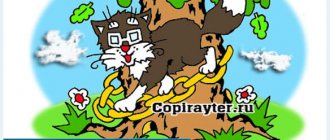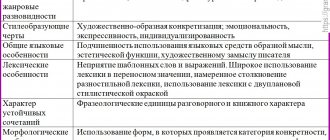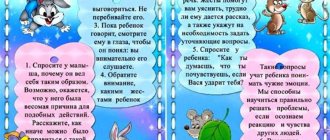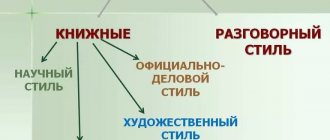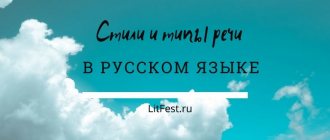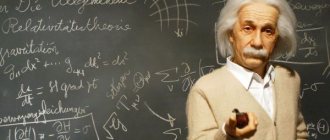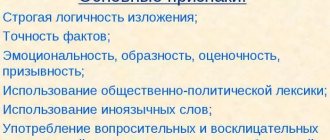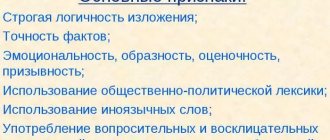Scientific Style: Freepick Did your teacher or supervisor send your report back for revision because of the presentation style? Abstracts and term papers, graduation projects - all this is written by schoolchildren and students using a scientific style. Examples from articles, monographs, textbooks and manuals will help you understand how a scientific style text differs from a regular one and how to create it.
Varieties and differences
The peculiarity of the scientific style and its difference from others is the division into substyles. Works of the scientific style are more often used in written form, due to the clarity of their design and content. According to the degree of science they distinguish:
- Proper scientific, academic style. It is used in serious works for a narrow circle of specialists, for whom the author expresses his research point of view.
If you know how to write such texts, you can make good money on a text exchange, for example Advego or Etxt.
The academic genre is addressed to professionals. The purpose of the substyle is to identify new data. Used for writing dissertations, abstracts, scientific reports. Examples of works of the academic genre - articles-monographs.
Works of the scientific style are presented in the form of separate works, completed works with a structure appropriate to the genre. Scientific prose includes reviews, lectures, reports, oral presentations at symposia and congresses, scientific reports and dissertations. The works were created by the author for the first time. Therefore they are classified as primary.
Generalization of data, secondary information materials – works created in the form of abstracts or annotations.
- The scientific advertising style is represented by industrial advertising with the benefits and results of purchasing a specific product or using new achievements.
- Scientific reference literature presents information without details, extremely accurate, in a condensed form. The reader receives only the facts.
- Educational and scientific literature is characterized by illustrations and material for repetition. Such works set out the fundamentals of science for schools, institutes, lyceums and other educational institutions.
Publications in a scientific and educational style - for students, that is, future specialists who need to be taught to describe facts. Therefore, the examples given are typical. The principle from general to specific is required.
There is a strict classification, terms are actively used. Examples of the substyle are textbooks, lectures, and reference books. Term papers and reports for seminars are also written in the educational and scientific genre.
- Popular science publications – biographies of outstanding people, stories of discoveries, chronicles of events, essays. It is interesting to read such publications: they contain illustrations, explanations, and examples.
To convey facts and research results to non-specialist readers, a popular science style is used. It is reminiscent of fiction and journalism, since it talks about complex things in an accessible and understandable way.
The readers for whom the popular science genre is intended do not have special knowledge. Therefore, while maintaining the clarity of the scientific style, the presentation is simplified, even emotional language means are used. The purpose of publications is to acquaint readers with the facts described.
Special terms and numerical data are used to a minimum and are explained in detail each time. It is easy to read such texts, there are comparisons with familiar subjects, the presentation is simplified, and specific facts are considered without general reviews.
The substyle is used in popular science publications, books, and children's encyclopedias. It is characterized by greater freedom and is able to change from a newspaper column “This is interesting” to a popular science book close to a textbook.
The presentation is accessible and clear. But according to this criterion, popular scientific and educational scientific texts differ slightly.
A popular science text offers readers the most interesting facts, and the presentation resembles a book style, accessible to non-specialists. Such publications differ from academic ones in that the terms are explained in accessible language, and the results are presented without unnecessary details. Neutral style is similar to popular science.
- The scientific and technical substyle is addressed to specialists in the technical field. Its goal is to apply the achievements of science in practice.
Secondary texts, that is, compiled on the basis of existing sources - abstracts, abstracts, theses, annotations. To reduce the volume of writing, information is condensed during preparation.
Each substyle or genre has its own characteristics, but they do not destroy the unity of the scientific style, maintaining common features.
Choosing a style depending on the task
And now we come to the cornerstone of copywriting: how to determine the style that is optimal for achieving specific goals?
Yes, choosing an adequate style is sometimes difficult at first. And not the first ones either, especially if the author’s ideas are diametrically at odds with the customer’s opinion. This is why I practice long-term cooperation, and only with customers whose ideas about good writing coincide with mine.
When choosing a text style, consider:
- Portrait of the target audience . It is impossible to speak to an audience of specialists and uninitiated people in the same language: the former will laugh at you, the latter will not understand. As I said, the conversational style is a priority, and the degree of “scientific” or “official” should be correlated with the perception of the target audience.
- Text tasks. The main task of the text is to attract attention, induce emotion or action. Sometimes the author chooses a conversational style, oversaturated with reduced vocabulary in order to evoke response emotions, creating a kind of holivar.
- Customer requirements . This is the basis, because whoever pays is the owner. It is advisable to convince the customer of your professionalism and ability to choose a style for dialogue with a specific target audience. You see that a free conversational style with light humor is suitable here, but the client craves officialdom - this is a common problem.
Scientific text “Animals in winter”
In spring, bears awaken throughout the Northern Hemisphere. They yawn, stretch and shake themselves. Not yet recovered from a long sleep, they wander under the rays of the sun, feeling an ever-increasing hunger.
Animals that enter true hibernation reduce their heart rate to one beat per minute.
Scientists say there are animals that go into true hibernation, such as ground squirrels and other small animals, and animals like bears that go into shallow hibernation. A small animal, falling into true hibernation, quickly reduces its heart rate from 150-300 beats per minute to 7 beats per minute or less. In California ground squirrels, the heart rate can drop to one beat per minute. Body temperature gradually decreases to very low numbers, sometimes almost to 0 degrees Celsius, although the initial body temperature of small rodents is practically no different from ours and is about 35 degrees Celsius. In short, the temperature in the hole becomes the same as the temperature in the burrow.
If hibernation has begun , then the animal seems to die to the outside world. You can step on a hibernating animal, throw it into the air, and catch it, and it won’t even squeak. However, small sleeping animals do not remain “sleepy” all winter long. Every few weeks, and sometimes even once every four days, these little animals wake up from hibernation, just like people “recover” from anesthesia. They drink water, even eat a little, and relieve their natural needs.
Every few days or weeks, animals that have fallen into true hibernation wake up to eat, drink and relieve their natural needs.
They can remain awake for up to a day, then return to their anabiotic state. During hibernation, such animals lose up to 40 percent in weight. In contrast, bears do not experience such dramatic changes in their bodies. The body temperature does not drop so sharply, the pulse rate decreases slightly. They are quite oriented in space and time. Hibernation in bears is better called napping.
Lesson 28
Scientific text “Why does it snow in winter and why is it white?”
Lesson 29
Scientific text “Preparing the vacuum cleaner for use”
To connect the hose to the vacuum cleaner, insert it into the hose connector by turning it slightly clockwise.
To disconnect the hose, pull it out of the hose connector by turning it slightly counterclockwise.
To connect the tube, press the spring locking button and insert the narrow section into the wider one. When the tube is connected correctly, the release button will pop out.
To disconnect the tube, press the spring-loaded locking button and pull one section out of the other.
You can attach a nozzle to the tube.
If you want the attachment to be handy while cleaning (e.g. steps, upholstery, tapestries), attach the attachment directly to the handle.
Lesson 30, 31
I.A. Degtyarev “Different”
Characters: Mother Duck, Big, First, Yellow, Quack, Spanish Duck, Turkey, Gray Duck, Spanish Rooster, Chickens, Domestic Cat Shadow, Wild Ducks
The poultry yard was noisy, squeaking and quacking loudly. His cheerful hubbub made Mother Duck’s children’s duck hearts fall right into the heels of their brand new orange paws. Today, for the first time, they are taken out into the courtyard, a huge adult world, where there is no roof, and instead of blank plank walls there is a white picket fence, through which, if you jump, you can see a real pond.
First: I'll go first! I'll go first! Mommy, tell everyone that I need to go ahead!
Quack quack. Quack. K-r-r-rya. Mommy, as soon as we go out into the yard, I will grunt loudly!
Yellow: Mommy, why are the chickens yellow too, after all, they’re chickens, but they’re yellow?!
Big: And I'm gray, like an angry duck. Mom, when I get big, will I turn yellow?
Mother Duck: Stop it! Do you understand or not that now the whole yard will be looking at you?! What are you thinking about! Everyone line up! First Quack, Yellow and Big. Big, try not to stick your head out and ask your ridiculous questions, “When I grow up. “And so it’s already unknown who he looks like! Don’t forget, we say hello to everyone, but as soon as I approach the Spanish Duck, stop, quack and bow. Quack, you need to say “quack”, not “quack”, and when you say hello, you need to strain yourself, as if the Cat was chasing you! I continue. The Spanish Duck has a wonderful red patch on its leg, but it is unnecessary to look at it, it is indecent. This rag is the highest distinction...
A short example of a scientific text about animals
To practice reading skills, children who are beginning to read need texts that are easy to understand and have a vocabulary that is easy to understand.
Short stories about animals are suitable here. Stories, fabulous and not so, about animals are useful not only for schoolchildren, but also for preschoolers who are starting to read, because in addition to reading skills, they broaden the children’s horizons. Examples of texts can be found here.
It is useful to read the text and draw its content. This practice develops imagery: the child reads and immediately imagines the picture on the “internal monitor”.
Understanding and memorization are greatly facilitated. Not all children (for various reasons) like to draw. That's why we came up with stories for coloring books: we read the text and color the animal. The site “Non-standard children” wishes you success.
Scientific and artistic style: case study
⇐ PreviousPage 30 of 41Next ⇒Let's look at an example of the interaction of two styles - artistic and scientific.
Excerpt from the article:
“The youth of our country love forests and parks. And this love is fruitful, active. It is expressed not only in the establishment of new gardens, parks and forest belts, but also in the vigilant protection of oak groves and forests. One day, at a meeting, even splinters of wood appeared on the presidium table. Some villain cut down an apple tree growing alone on the river bank. Like a beacon, she stood on the steep mountain. They got used to her, like the appearance of their home, they loved her. And now she was gone. On this day, the conservation group was born. They called it "Green Patrol". There was no mercy for the poachers, and they began to retreat.” N. Korotaev.
Features of the scientific style:
Terminology (presidium, laying forest belts, krutoyar, poachers).
The presence in a series of nouns of words denoting the concept of a sign or state (bookmark, protection).
Quantitative predominance of nouns and adjectives in the text over verbs (this love is fruitful, active; in the laying of new gardens, parks and shelterbelts, but also in the vigilant protection of oak groves and forests).
The use of verbal phrases and words (bookmark, security, mercy, meeting).
Verbs in the present tense, which have a “timeless”, indicative meaning in the text, with weakened lexical and grammatical meanings of time, person, number (loves, expresses);
A large volume of proposals, their impersonal nature in combination with passive structures (It is expressed not only in the establishment of new gardens, parks and forest belts, but also in the vigilant protection of oak groves and forests).
Features of the artistic style:
Wide use of vocabulary and phraseology of other styles (presidium, laying forest belts, krutoyar).
The use of various figurative and expressive means (this love is fruitful, vigilantly guarded, evil), the active use of verbal ambiguity of the word (the appearance of a house, “Green Patrol”).
Emotionality and expressiveness of the image (They got used to her as the face of their home, they loved her. And then she was gone. On this day the group was born).
The manifestation of the author’s creative individuality is the author’s style (It is expressed not only in the establishment of new gardens, parks and forest belts, but also in the vigilant protection of oak groves and forests. Here: a combination of features of several styles).
Paying special attention to particular and seemingly random circumstances and situations, behind which one can see the typical and general (Some villain cut down an apple tree... And then it was gone. On this day, a nature conservation group was born).
The syntactic structure and corresponding structures in this passage reflect the flow of the author’s figurative and emotional perception (Like a lighthouse, she stood on the steep mountain. And now she was gone).
The characteristic use of numerous and varied stylistic figures and tropes of the Russian literary language (this love, fruitful, active, stood like a beacon, there was no mercy, growing alone).
The use, first of all, of vocabulary that forms the basis and creates the imagery of the style being analyzed: for example, figurative techniques and means of the Russian language, as well as words that realize their meaning in the context, and words of the widest circulation (youth, likhodey, fruitful, active, guise).
In terms of the variety of linguistic means, literary techniques and methods, the artistic style is perhaps the richest. And, unlike other styles, it has a minimum of restrictions - with proper depiction of images and an emotional mood, you can even write a literary text in scientific terms. But, of course, you shouldn’t abuse this.
Texts are written for readers, so they must be accessible and understandable. And the explicit use of vocabulary from other styles is possible only for authenticity, to create colorful images of characters or atmosphere.
So, during a conversation between two bankers, economic terminology is only a plus, but “official” clichés and bureaucracy will definitely be superfluous when describing beautiful nature.
Thus, when working with an artistic style, with all its flexibility, you need to watch the vocabulary very carefully. Especially if you write or are planning to write works of fiction. For it is the artistic style that is considered a reflection of the Russian literary language.
Ticket number 20
1. The concept of a poetic figure.
2. Displacement of space and time.
3. Descriptiveness, plotting and psychologism of the author’s style.
The concept of a poetic figure.
Poetic figures. - They are another important linguistic means expressing syntactic expressiveness.
Syntactic expressiveness is another important linguistic means of fiction. What is important here is the length and melodic pattern of phrases, the arrangement of words in them, and various kinds of repetitions and subtractions.
Repetition is the main type of stylistic figures of addition. The following types of repetitions are distinguished:
Epanalepsis - repetition of words in a row (AA);
anaphora – repetition at the beginning of adjacent sections of text (A..., A...);
epiphora – repetition at the ends of adjacent text segments (...A,...A);
anadiplosis (...A, A...);
simploc (A...B, A...B).
Polyconjunction (polysyntheton ) - a repetition of a conjunction, felt as redundant and used as an expressive means, usually in the position of anaphora: “And the shine, and the noise, and the talk of the waves” (A.S. Pushkin).
Non-union (asyndeton ) - the construction of a sentence in which homogeneous members or parts of a complex sentence are connected without the help of conjunctions: “Swede, Russian stabs, chops, cuts. / Drum beat, clicks, grinding”, A.S. Pushkin).
Parallelism is an identical or similar arrangement of speech elements in adjacent parts of the text, which, when correlated, create a single poetic image:
Ah, if only there were no frosts on the flowers,
And in winter the flowers would bloom;
Oh, if only I wasn’t sad,
I wouldn't worry about anything.
Chiasmus is inverted parallelism with the arrangement of similar parts in the sequence AB – B' A': “Everything is in me, and I am in everything” (F.I. Tyutchev).
Inversion is a violation of the “natural” order of words to highlight them in the phrase: “And the guests of this alien land are not appeased by the death of this land” (i.e., the guests of this alien land are not appeased even by death) (A.S. Pushkin).
Antithesis is a stylistic figure based on a sharp opposition of images and concepts, sometimes combined with their paradoxical rapprochement: “They are shamefully indifferent to good and evil”; “Both we hate and we love by chance” (“Duma” by M.Yu. Lermontov); “Don't be left behind. I am a guard, / You are a guard. There is only one destiny” (M.I. Tsvetaeva, from the series “Akhmatova”).
Gradation is a chain of members with a gradual increase in significance (“Neither call, nor shout, nor help,” M. Voloshin) or decrease (“All facets of feelings, all facets of truth are erased in worlds, in years, in hours,” A. Bely) .
A rhetorical question is one of the stylistic figures; a structure of speech in which a statement is expressed in the form of a question. A rhetorical question does not presuppose an answer; it only enhances the emotionality of the statement and its expressiveness.
A rhetorical exclamation is one of the stylistic figures; such a construction of speech in which this or that concept is affirmed in the form of an exclamation. A rhetorical exclamation sounds emotional, with poetic inspiration and elation.
⇐ Previous30Next ⇒
What Causes Trends in Stock and Commodity Markets Freight Train Theory Explained My first 17 years of market research consisted of trying to figure out when...
What will happen to the Earth if its axis shifts by 6666 km? What will happen to the Earth? - I asked myself...
WHAT IS CONFIDENT BEHAVIOR IN INTERPERSONAL RELATIONSHIPS? Historically, there are three main patterns of differences that exist between...
WHAT HAPPENS IN ADULT LIFE? If you are still connected to your mother in the wrong way, you are avoiding separation and independent adult existence...
Didn't find what you were looking for? Use Google search on the site:
Stylistics as a branch of linguistics
I won’t bore you with scientific terminology, although it is difficult to do without it entirely: linguistics is as exact a science as, for example, mathematics. And stylistics is one of its sections devoted to the capabilities and means of language, as well as the patterns of their use in a given situation.
A person who is fluent in speech (both oral and written) rarely thinks about what style he is currently expressing his thoughts in and whether this or that expression is inherent in him. At a subconscious level, he differentiates vocabulary and the construction of phrases, cutting off those that are alien to a given situation. However, not everyone has such a gift, and the school curriculum devotes catastrophically little time to this topic. So let's try to bridge this gap, paying attention not only to theory, but also to examples.
Conversational style
What is special about the conversational style? It is inherent in oral speech, its main features are spontaneity and ease. According to linguist O. Lapteva, this determines the choice of linguistic means:
- colloquial, capacious vocabulary;
- short and expressive sentences;
- phraseological units and slang expressions;
- lexical repetitions, addresses, introductory words, interjections;
- exclamatory and interrogative sentences.
Spoken speech is the main tool of communication between people in everyday life. Its main form of implementation is dialogue. In addition to linguistic techniques, facial expressions, gestures, and context play a role in conversational style. This style is also used in personal correspondence:
It's a shame, lady.
You are angry with me, not deciding who is to blame, me or the post office, and you leave me for two weeks without news of yourself and the children. I was so embarrassed that I didn't know what to think. Your letter reassured me, but did not console me. The description of your trip to Kaluga, no matter how funny it may be, is not funny to me at all. What kind of desire is there to drag yourself to a nasty little provincial town to see bad actors playing a bad old opera badly? I asked you not to travel around Kaluga, but apparently that’s your nature (excerpt from Alexander Pushkin’s letter to his wife).
Style in copywriting
As I already said, it is extremely difficult to find publications written within the same style on the Internet. And this is quite natural: speech is a plastic phenomenon, and with good command of it, you can unobtrusively include words like “fool” and “synchrophasotron” in the same text. Yes, side by side they look very alien, but they can be combined into a single whole so organically that the reader will perceive it absolutely normally.
Example:
“Young Physicist” kits are the first step into the fascinating world of experiments and discoveries. Perhaps the inventor of a new generation synchrotron is dormant in your foolishness? Let's wake him up together?
And I will repeat again. There are no other text styles other than the ones I mentioned. All this terminological balancing act performed by some copywriters serves only one purpose - to emphasize their own uniqueness and differentiate themselves from competitors. Well, everyone promotes themselves as best they can, we wish them good luck. Although no, I made a slight reservation, there is another style, the author’s, but this is from a completely different opera.
Short stories about animals
The author of the stories is educational psychologist Galina Obnorskaya.
A story about a squirrel.
A squirrel lived in an old forest. The squirrel gave birth to a squirrel daughter in the spring.
The squirrel ran away. Finally she stopped. I looked around, and the places were unfamiliar! There are no mother squirrels. What to do?
A squirrel saw a hollow in a pine tree, hid and fell asleep. And in the morning the mother found her daughter.
Greedy squirrel
The builders left about two dozen birch and pine trees near the new school. It turned out to be a small square.
Despite the school noise and din, two squirrels settled in it. The animals were young and agile. If someone appeared below, they immediately flew up to the top of the tree.
Schoolchildren brought nuts to the squirrels. They left treats on a large boulder in the middle of the park. When the children left, the animals came down and fed.
Sometimes hooligans came. They threw stones at the squirrels. But the animals ran away to the treetops. The stones did not reach there.
One day a strange old squirrel appeared in the park. First she ate all the nuts on the stone. The little squirrels also tried to go down for food. But a strange squirrel drove them away.
This happened several times. The young squirrels were starving. They ate their supplies and left the park because of a greedy old squirrel.
A story about an owl
An owl lives in the northern forests. But not an ordinary owl, but a polar one. This owl is white. The paws are shaggy and covered with feathers. Thick feathers protect the bird's legs from frost.
The white owl is not visible in the snow. The owl flies quietly. He will hide in the snow and watch for a mouse. A stupid mouse won't notice.
About the cuckoo
- Cuckoo, cuckoo, how many years will I live? - both adults and children ask when they hear the cuckoo’s song.
Let us also listen to her cuckooing. The cuckoo is a cautious bird. To see it, you have to be observant.
The cuckoo is often criticized for laying eggs in the nests of other birds. The cuckoo's adoptive parents feed and educate it, for example, teach it to fly.
Why does the cuckoo do this? Other birds lay all their eggs almost simultaneously and then hatch the chicks. The chicks hatch together and grow together.
The cuckoo lays many small eggs not all at once, but gradually, almost all summer. Therefore, she cannot hatch the chicks herself.
Having laid an egg, the cuckoo takes it in its beak and places it in someone else's nest. The deception is never discovered.
But the cuckoo is very useful. She eats such furry caterpillars that no other bird pecks. Don't hurt the cuckoos!
A story about a moose
The old elk walked through the forest for a long time. He is very tired. The elk stopped and dozed off.
The moose dreamed that he was still a little moose calf. He walks with his mother through the forest. Mom eats branches and leaves. And the elk calf is happily jumping along the path nearby.
Suddenly someone buzzed terribly near my ear. The little elk got scared and ran to his mother. Mom said: “Don't be afraid. This is a bumblebee. He doesn’t bite moose calves.”
In a forest clearing, the calf liked the butterflies. At first the elk calf did not notice them. Butterflies sat quietly on the flowers. The elk calf galloped across the clearing. Then the butterflies flew into the air. There were a lot of them, a whole swarm. And one, the most beautiful, sat on the moose calf’s nose.
Far beyond the forest the train whistled. The old elk woke up. He rested. You can move on with your business.
A story about a deer
Deer live in the North. The homeland of deer is called the tundra. Grass, shrubs and gray reindeer moss grow in the tundra. Reindeer moss is food for deer.
Deer walk in herds. There are deer of different ages in the herd. There are old deer and little fawns. Adult deer protect babies from wolves.
Sometimes wolves attack the herd. Then the deer surround the fawns and put their antlers forward. Their horns are sharp. Wolves are afraid of deer antlers.
There is a leader in the herd. This is the strongest deer. All deer obey him. The leader protects the herd. When the herd is resting, the leader finds a tall stone. He stands on a stone and looks in all directions. He will see the danger and blow his trumpet. The deer will get up and move away from trouble.
A story about a fox
At the foot of the mountain there was a round lake. The place was deserted and quiet. There were a lot of fish swimming in the lake. A flock of ducks liked this lake. The ducks made nests and hatched ducklings. They lived like this on the lake all summer.
One day a fox appeared on the shore. The fox was hunting and came across a lake with ducks. The ducklings have already grown up, but have not yet learned to fly. The fox thought it would be easy to catch its prey. But it was not there.
